Image

ABSTRACT
For a city to be remembered, to be successful, to be desired, a distinct connection has to be made between the city-dweller and the city itself. In 1938 Kuwait transformed from a town that relied on trade into a single resource exporter of oil, fueling a booming modern economy. The influx of the automobile and modern solutions to Western ways of living would forever change the city. In the speed of these developments, critical aspects of city planning such as the pedestrian and the harsh desert climate were overlooked. Kuwait began to lose a connection between the city and its people. With the rise and spread of Western Modernism during this time, Kuwait City adopted a new medium of architectural expression that disregarded much of its former patterns of a heterogeneous urban fabric, and abandoning intricate street networks that produced social relations amongst the people and a sense of community. ¹ In The Charged Void: Urbanism, Alison and Peter Smithson argued that “Kuwaitis abandoned an older cohesive order and replaced it with a fragmented one which is in no way Arab.”²
In no building is this more apparent than in the so-called ‘Souk’ Al Manakh. Built as a ‘modern souk’, Souk Al Manakh would likely fall under the category of mixed-use, using polite terms. Realistically however, it is closer to a chimera: multiple building types wishfully combined to form an ideal that falls short of each ambition. In essence a modified parking garage, it runs against the grain in that the top story is an office, while the two lowest stories are retail. Neither function as intended. Designed under the guise of Modernism, this failure is a rallying cry for a larger conversation about continued development in Kuwait City that takes into account the realities of place.
Like many cities, Kuwait suffers the remnants of unintended urban void after careless redevelopment. One way of addressing these issues is reinvigorating the notion of monument, or a destination to which people actually desire to go. The life of a city is ultimately the life of the pedestrian. How we reach certain places and what we do once we are there define the urban experience. Equally important is the network of paths and directions to and from these places and ultimately between the people themselves. Manakh, in Arabic, means climate as well as market. By extending the historical souk into the Souk Al Manakh and reintegrating the two, a commercial destination will be formed through a series of weaving ramps where people from all parts of the city can engage with one another and the city itself through a new journey that reveals an urban visual narrative of Kuwait City.
Image
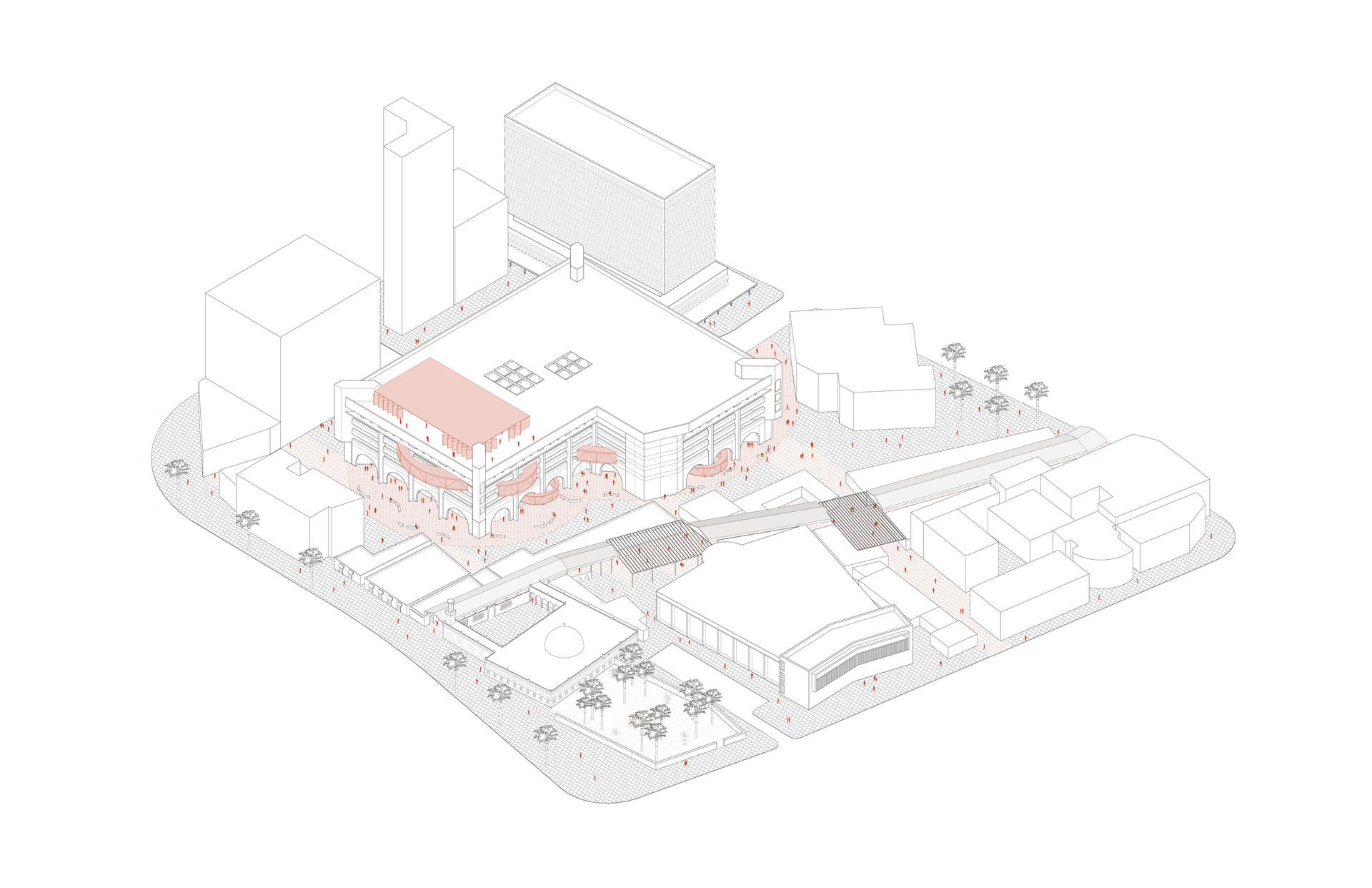
MODERNIZATION OF THE CITY
Image
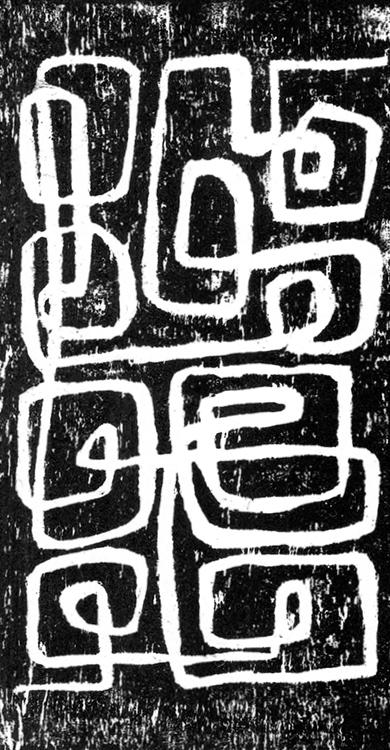
Image
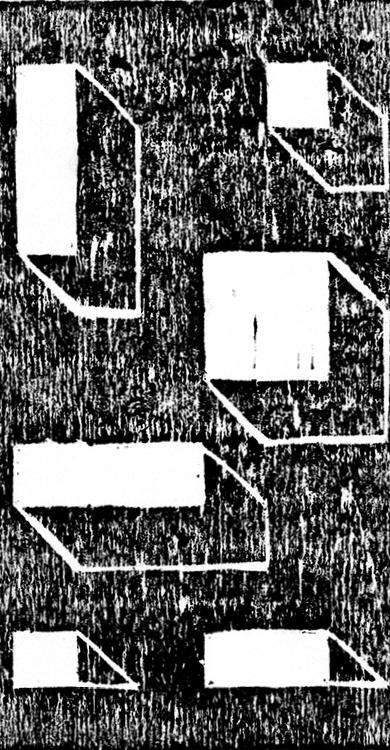
Many buildings in Kuwait considered part of the Modernist movement are unfortunately on the decline. They were designed with good intent, but due to changing patterns of the city, have become neglected. Demolition of these spaces is both costly and symbolically destructive, as many of the buildings are part of the rich architectural history of Kuwait City. This architectural analysis attempts to create renewed connections between the modern city dweller and these projects. During the economic boom in the 1950s, the rise of westernized modernism disregarded the old city patterns of intricate street networks that produced social relations amongst the people and a sense of community to treating the buildings as isolated islands creating a disconnect between the buildings themselves and the people.
MODERNIZATION OF THE CITY
Image
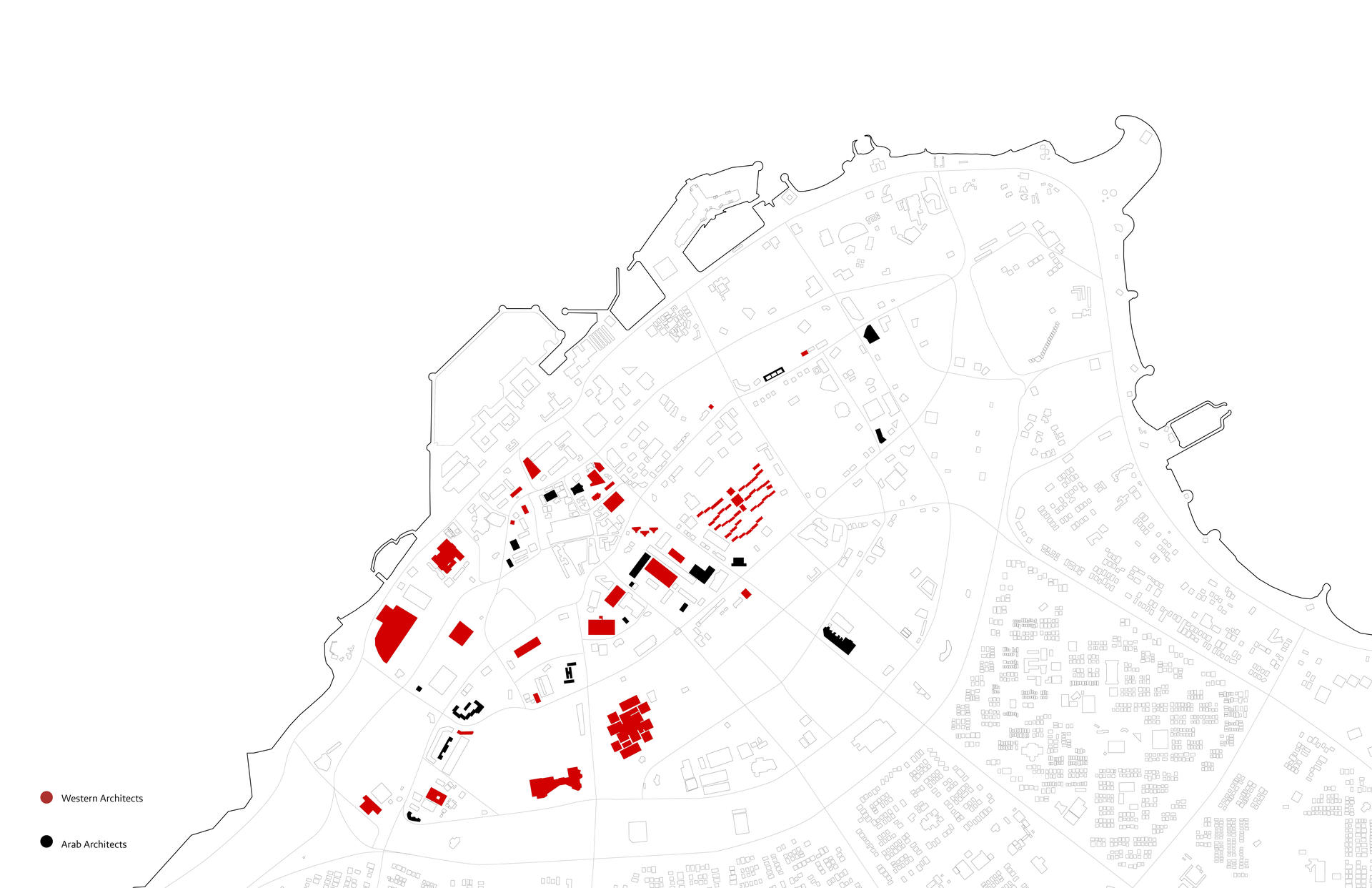
THE CITY TODAY
Image
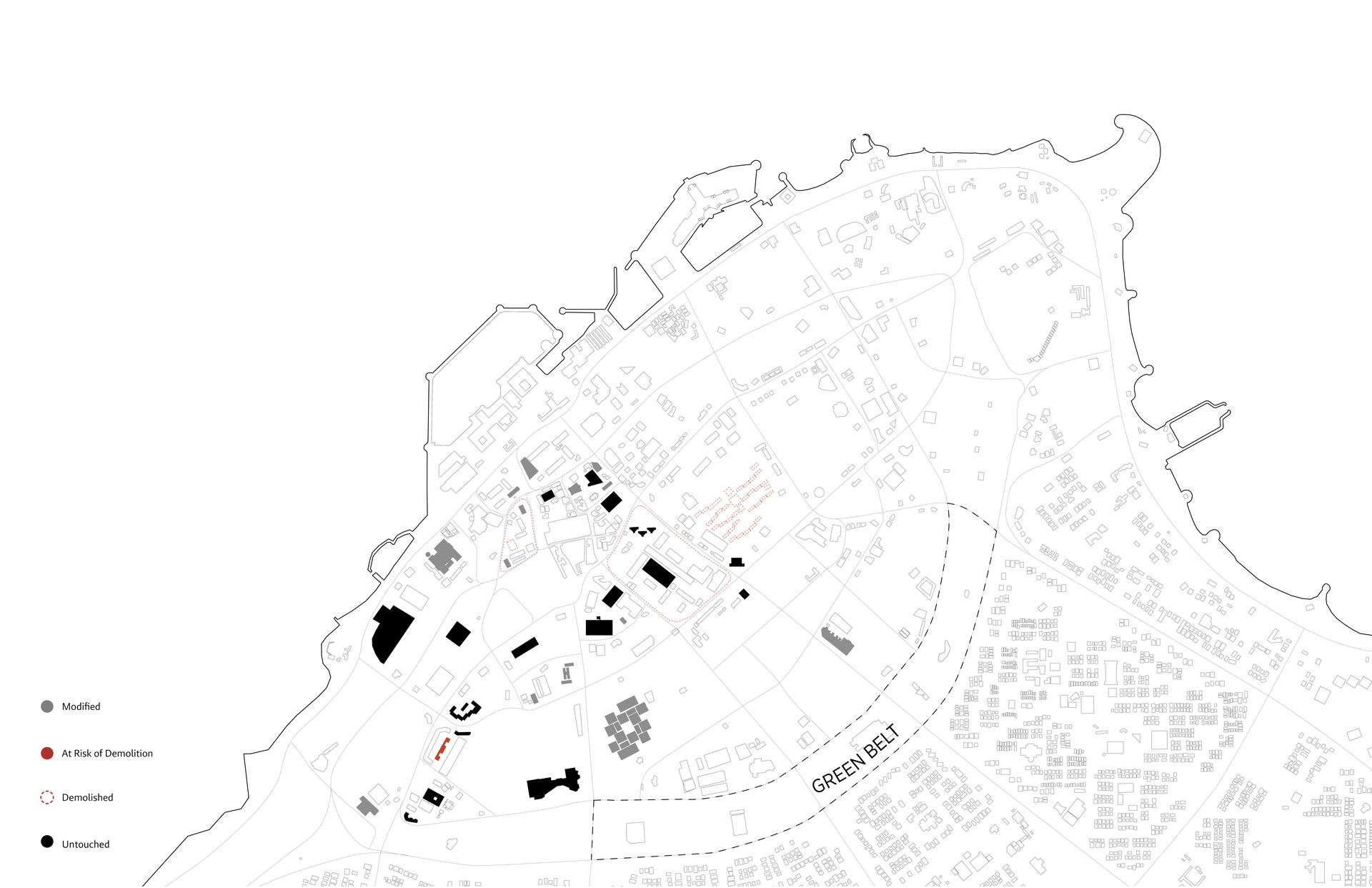
THE FUTURE CITY
Image
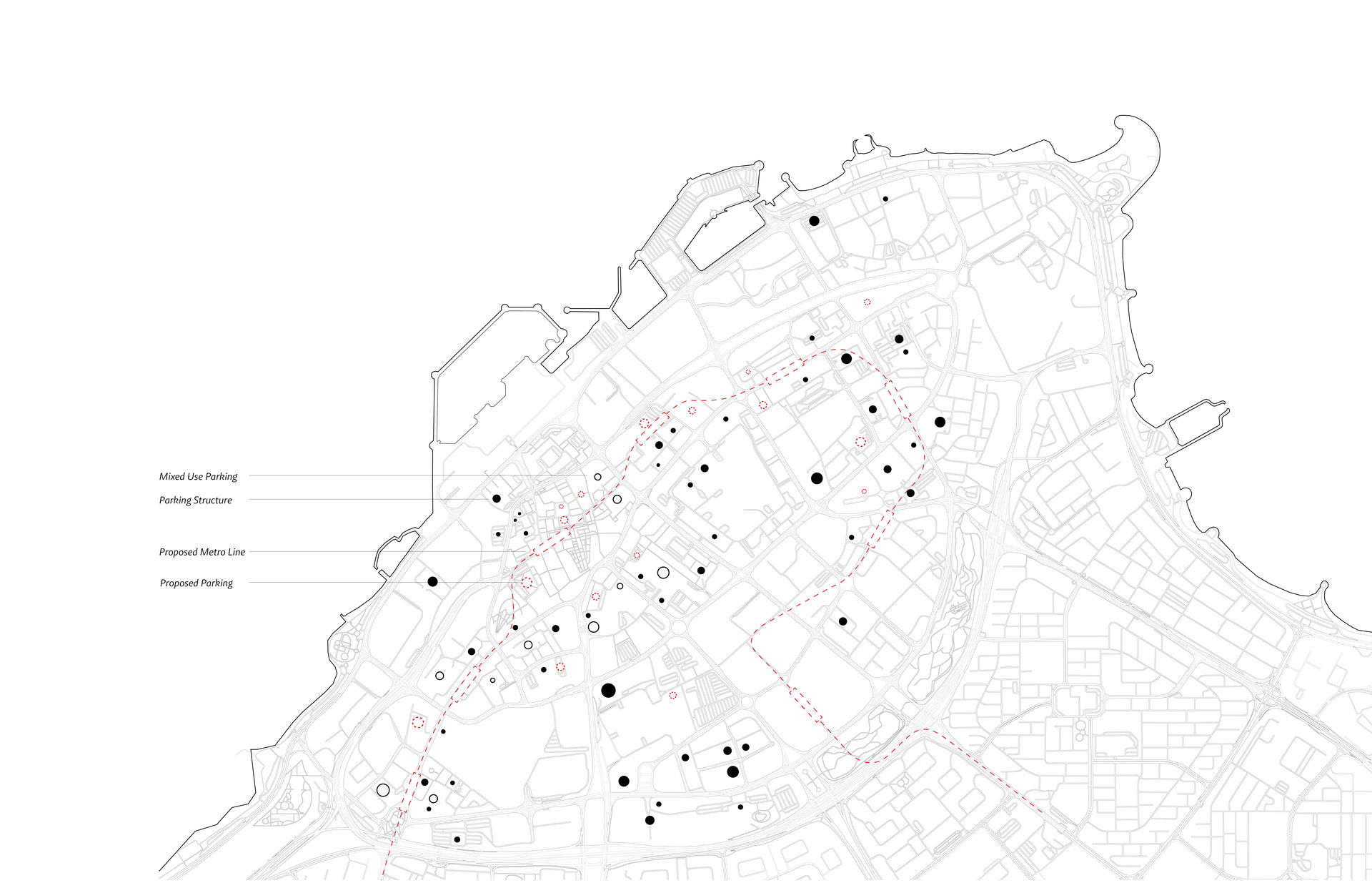
THE SITE | SOUK AL MANAKH
Image
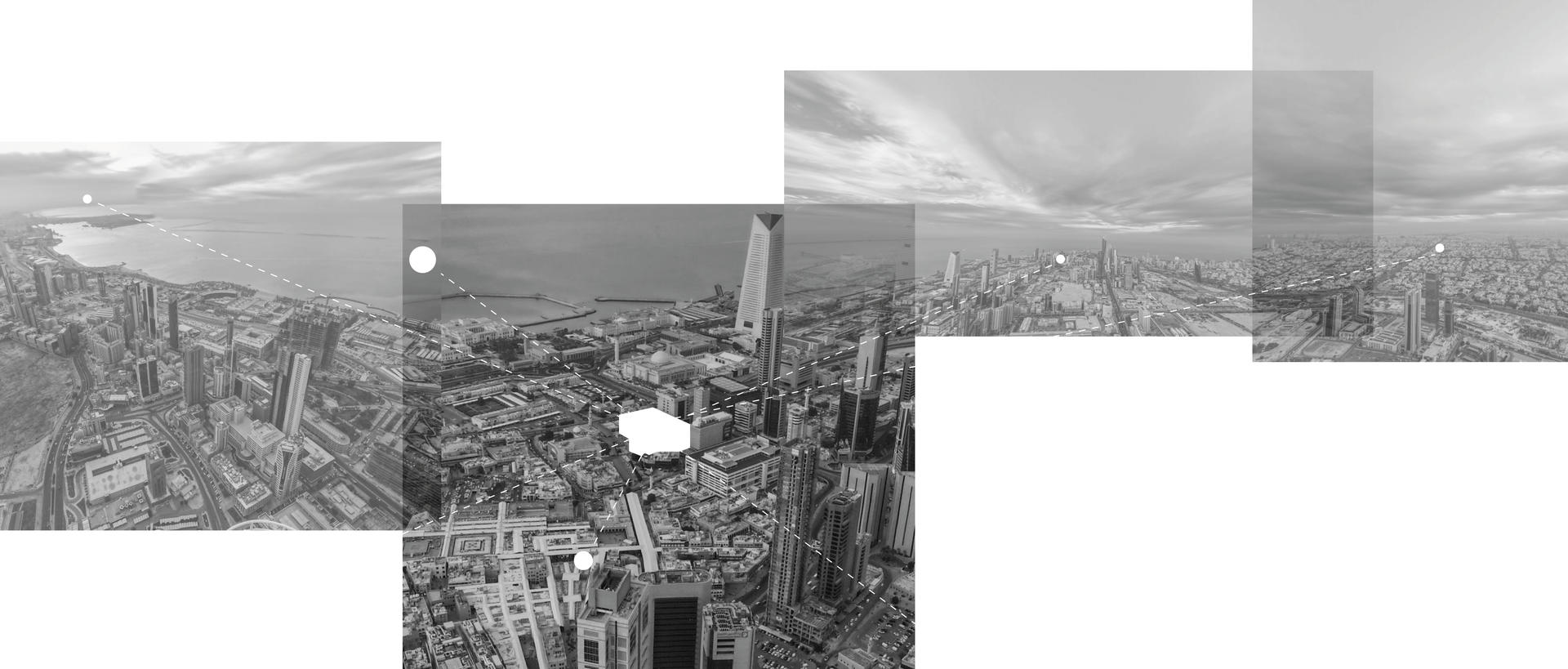
Image
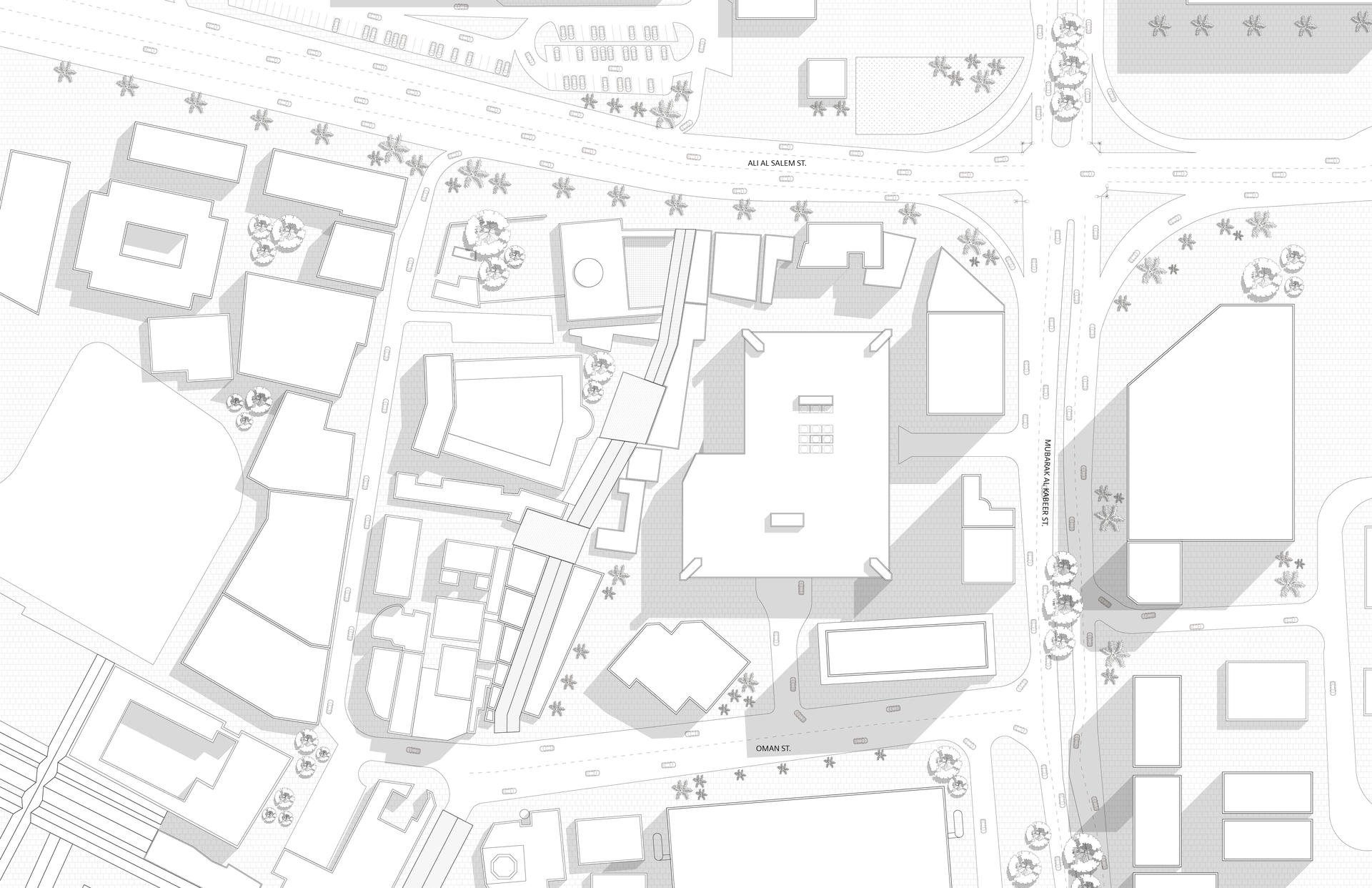
SOUK AL MANAKH
The site, Souk Al Manakh is located right at the heart of Kuwait City in the central business district area. Surrounding the site is a multitude of building types, including business, commercial, and retail. Souk Al Manakh was designed by The Architects Collaborative, a firm based in Cambridge, in 1973. It is a multistory structure that is considered one of the many Modern Souks, however in reality it is a commercial parking garage, where the lower levels are commercial spaces, followed by three stories of parking, and the last level is office space. However, since 2016 the commercial spaces have been turned into real estate offices and the usual bustling souk is idle and uninviting.
Image
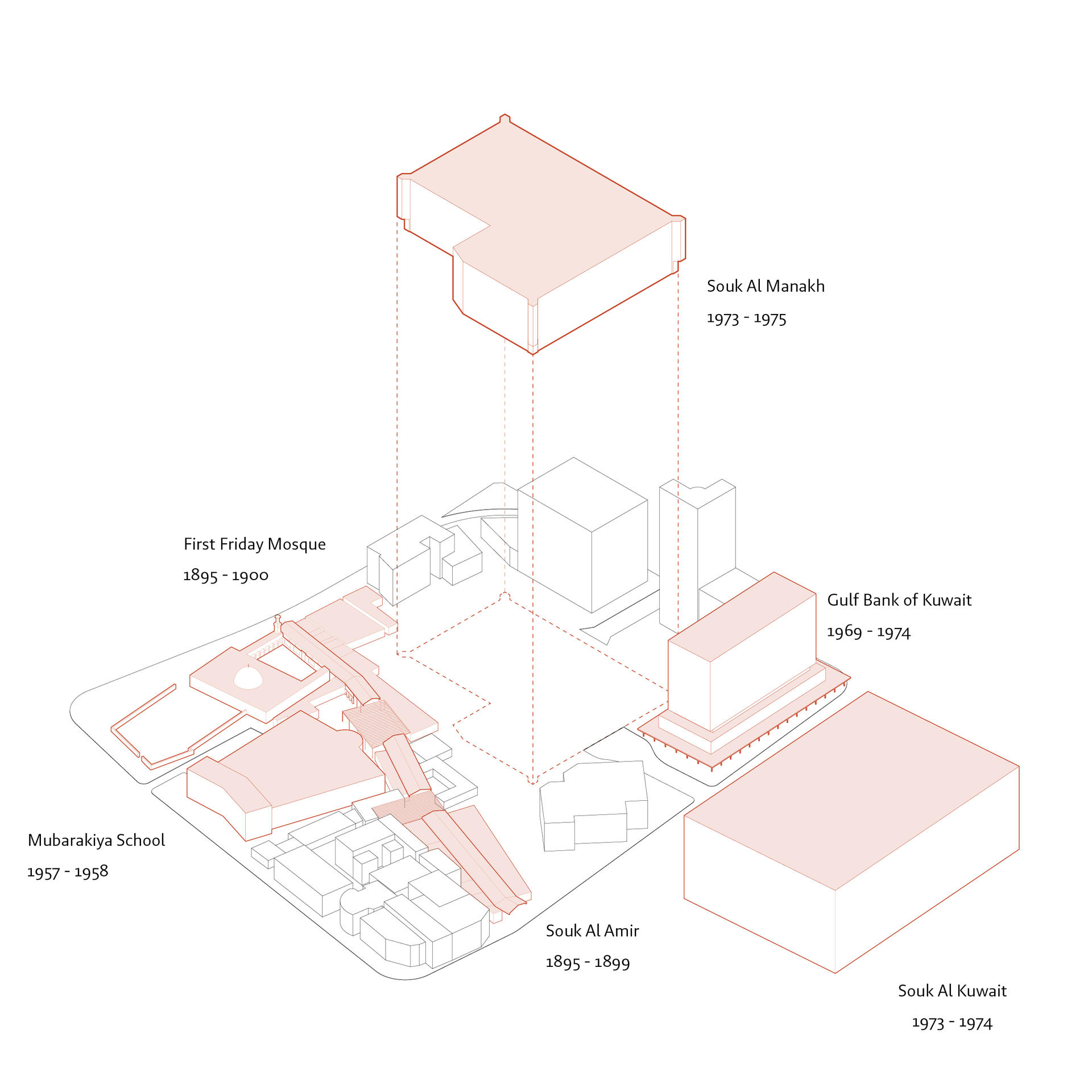
SITE MARKERS
Souk Al Manakh, located in the center of cbd5, is surrounded by buildings from different eras of Kuwait city that are equally important. From the old city we have the First Friday Mosque and the historic souk al amir. From the modern city, we have the Mubarakiya school which also is the site of the first school ever built, and the gulf bank of Kuwait. Fragments of the old city and the modern city are considered site markers because they identify characteristics of the place. I am considering both the old and the modern site markers because they are all a part of Kuwait’s history and by identifying them a connection can be made between the multiple pasts and present of the city. The Juxtaposition between the different types of architecture gives the site a narrative that does not exist anywhere else in the city.
DESIGN APPROACH | BUILDING AS A DESTINATION
FRAMEWORK
I approached the design with a 3-part framework:
- Reintroduce the human-scale:
There is a gap between the monumentality of the modern buildings in relation to the human scale.
- Re-activate:
Reactivating the unintended urban void by linking the existing building with Kuwait CIty’s new and ever-changing urban fabric.
- Urban Visual Narrative:
Creating a visual narrative that informs and praises Kuwait's urban architectural history through the use of the site markeras.
Image
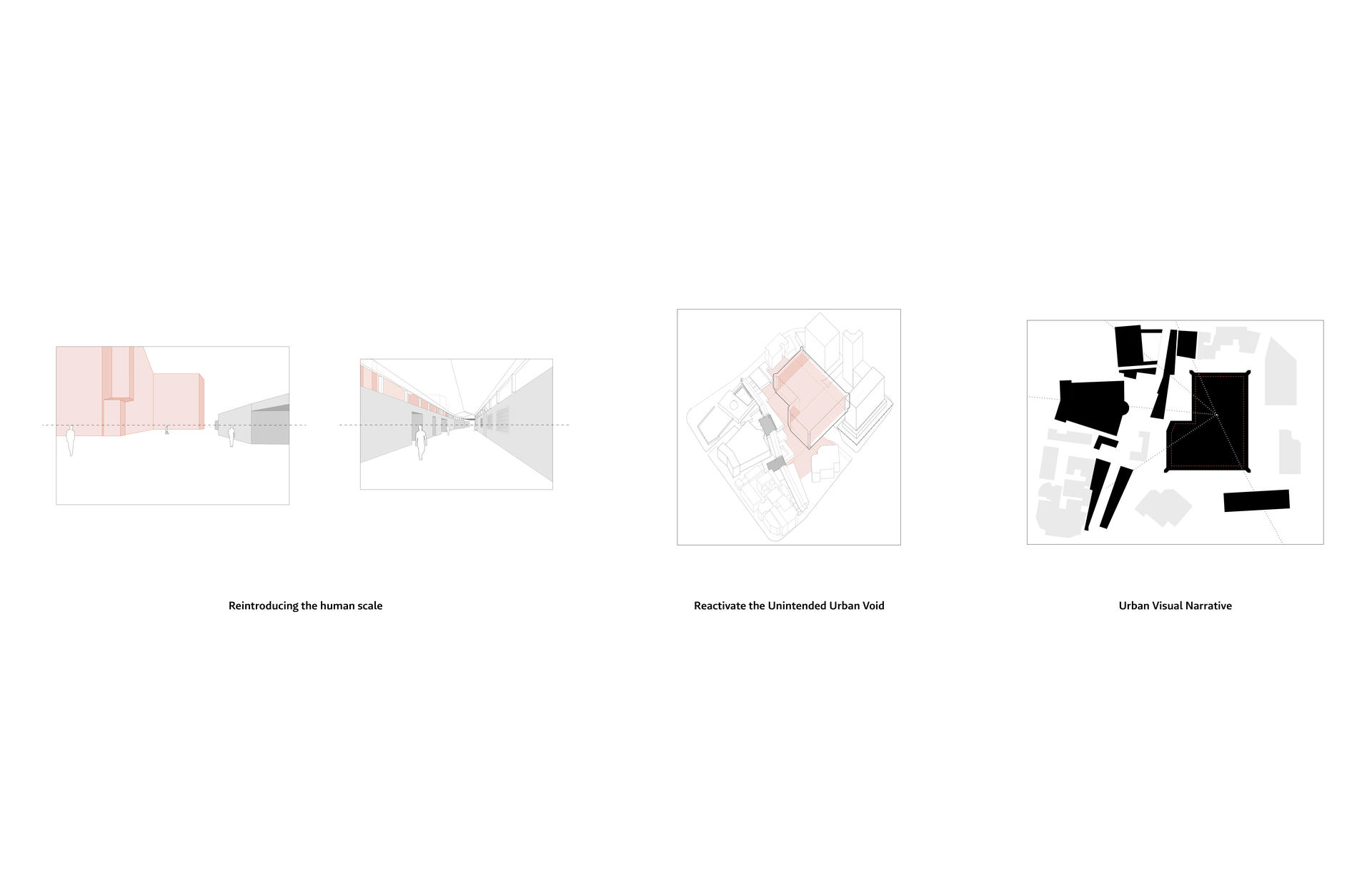
Building As A Destination | Program
Image

ARCHITECTURAL ELEMENTS
Image

To reactivate the building, the building will become a new destination by extending the souk. Percentage of the existing parking will be retained to provide parking for the existing office space. I am proposing three additional programs. A streetscape to extend the pedestrian experience of the street into the building. Walking is a big part of urban city life, which has been lost and not integrated in Kuwait. Social plaza, referencing urban plazas. This program will create spaces to increase social interactions between people. Again since street life in the city does not exist, my hopes is to bring back that type of city interaction into the building itself. Lastly, is to create an extension of the souk and providing a commercial destination.
Image
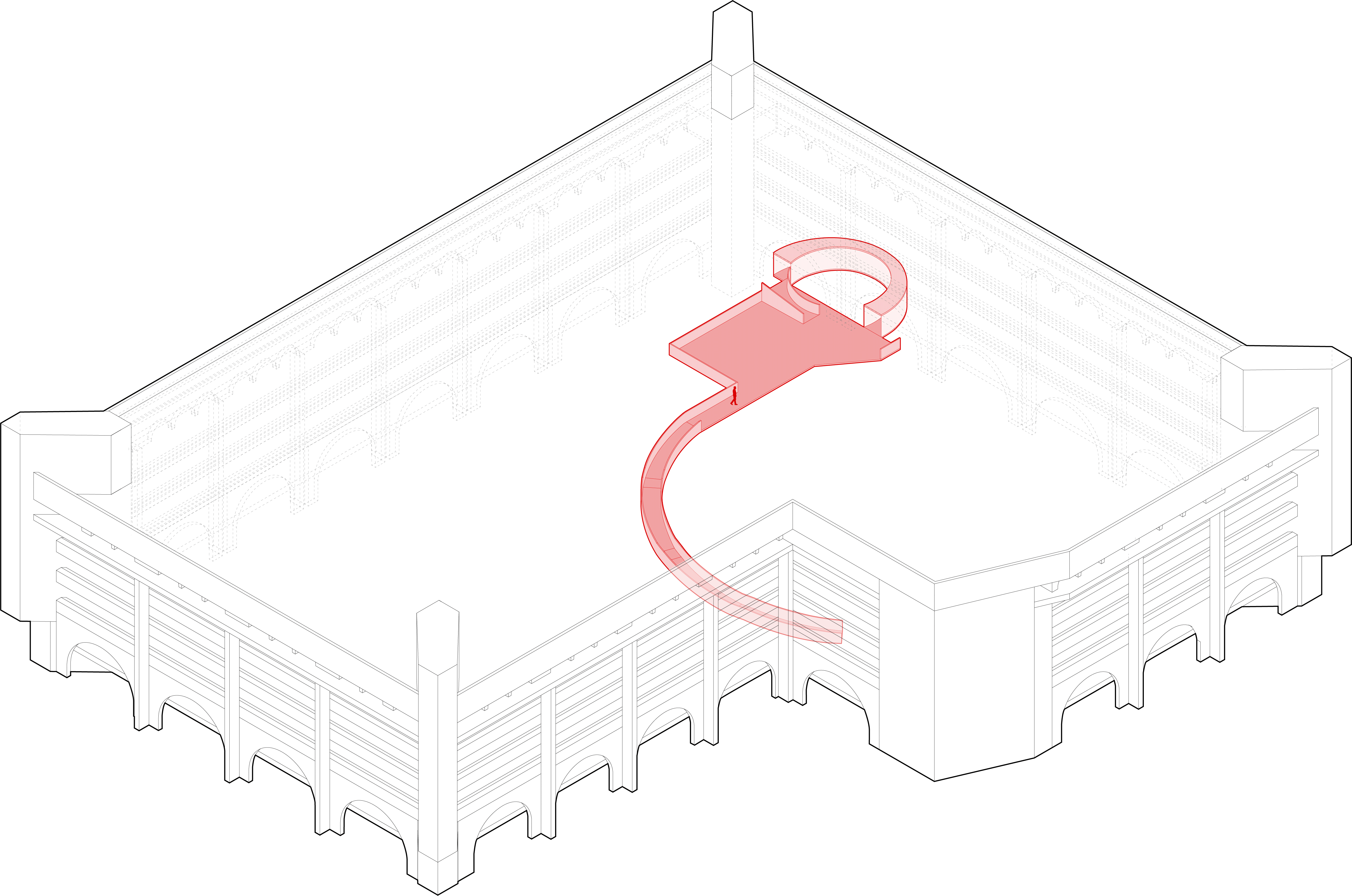
INTERVENTION STRATEGY
The intervention strategy is a total of six ramps that weave throughout the monumental Souk Al Manakh. The Ramps create a new journey that reveals Kuwait’s architectural past.
THE DESIGN | URBAN VISUAL NARRATIVE
GROUND FLOOR
Image
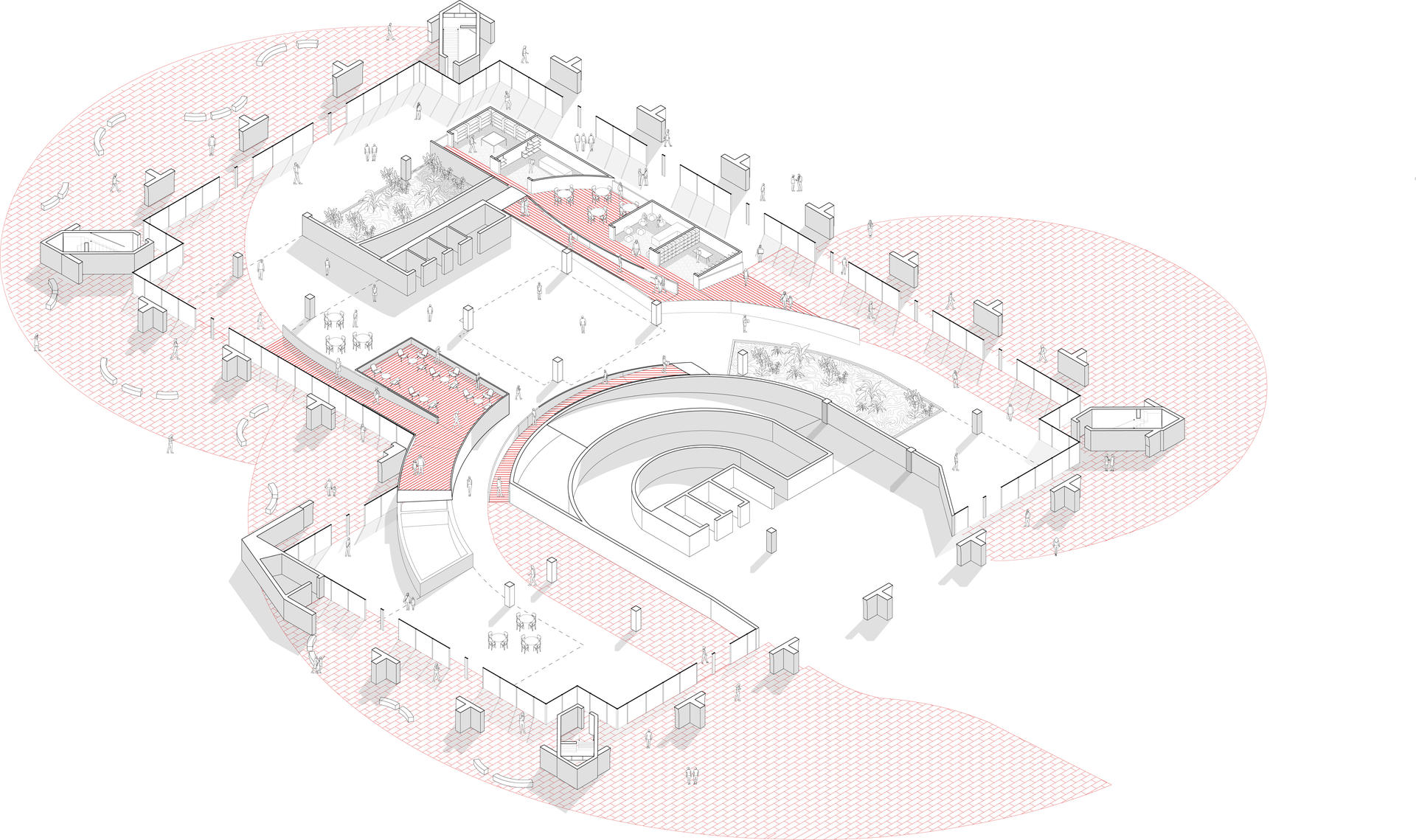
SECOND FLOOR
Image
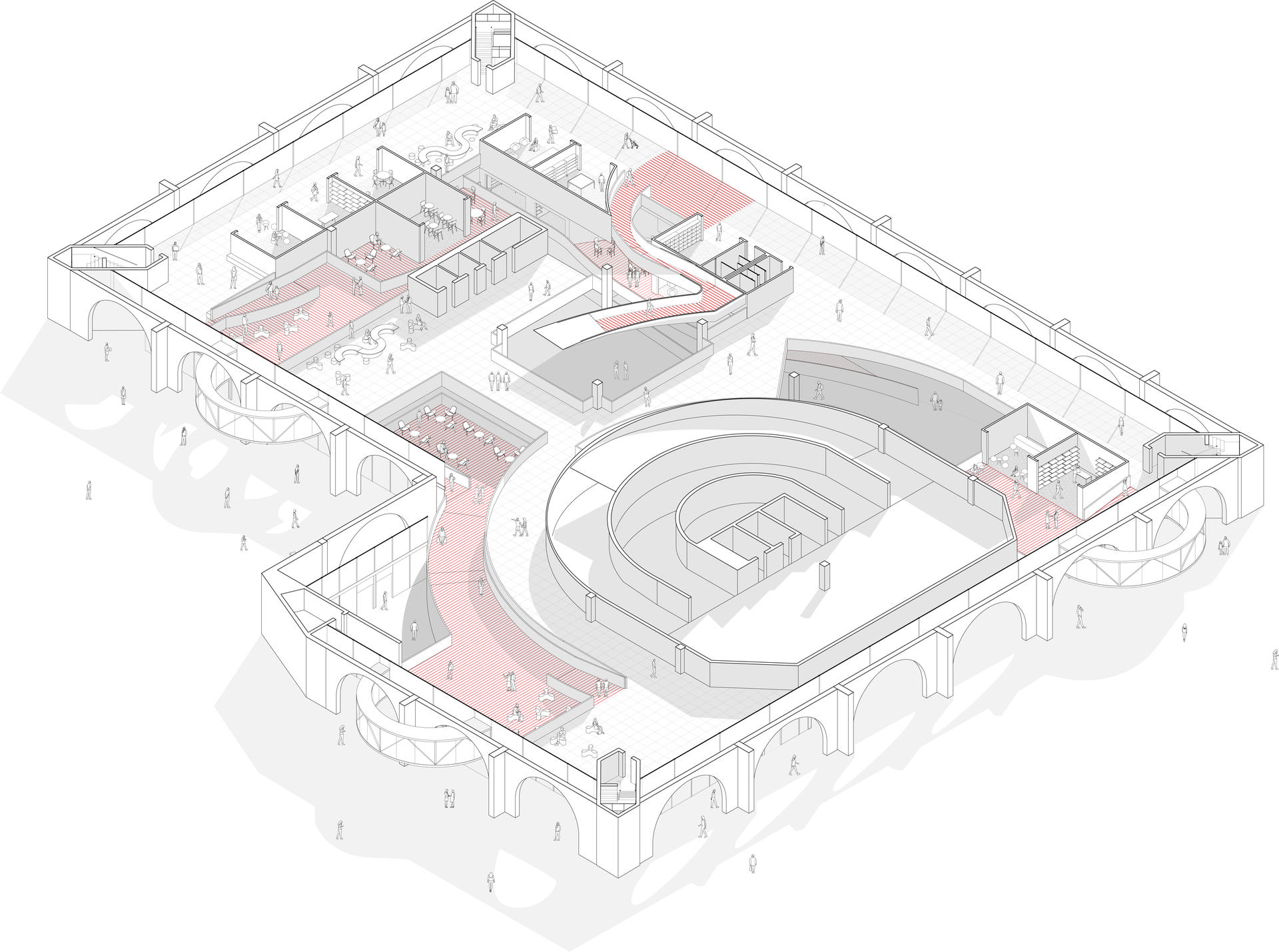
THIRD FLOOR
Image
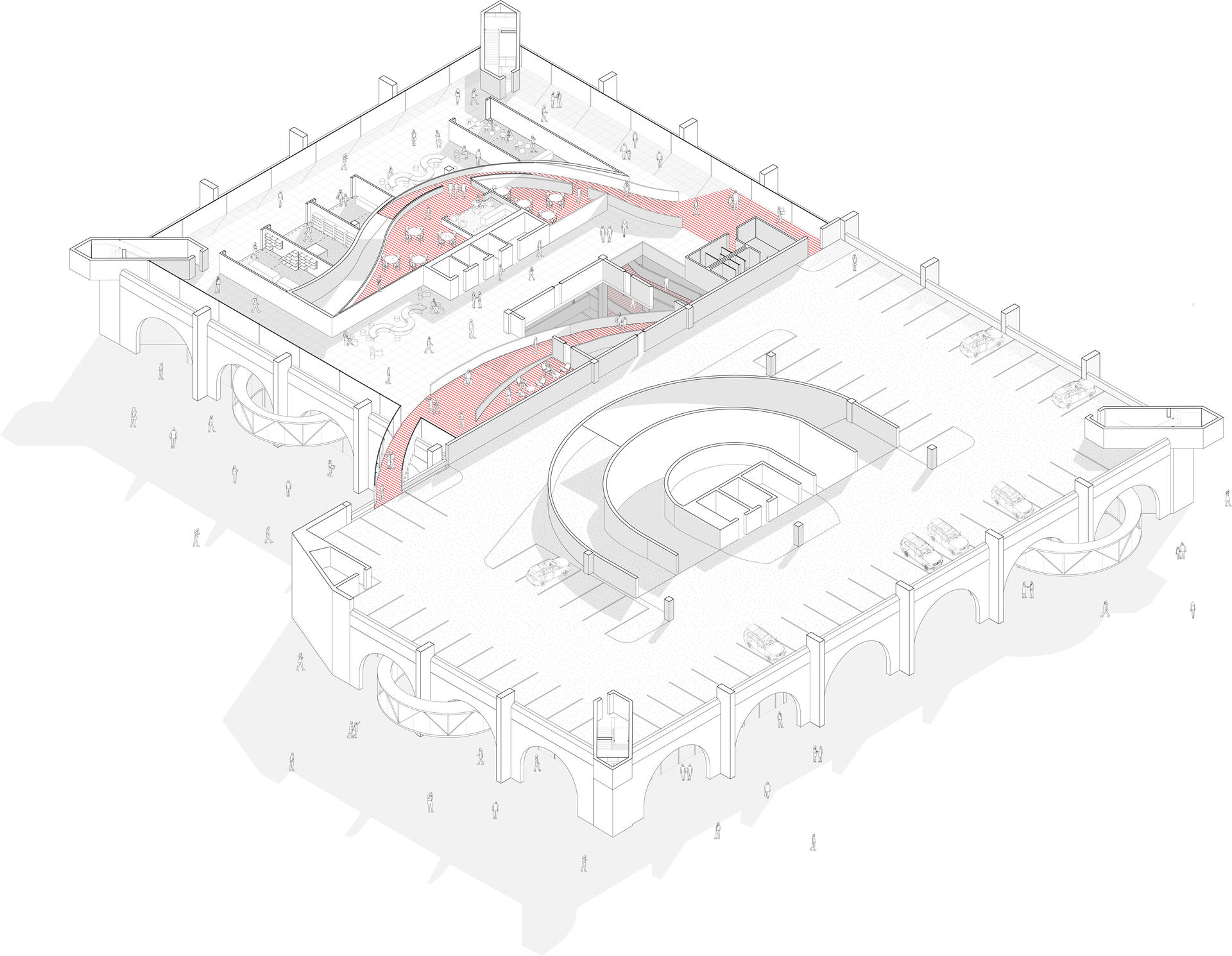
FOURTH FLOOR
Image
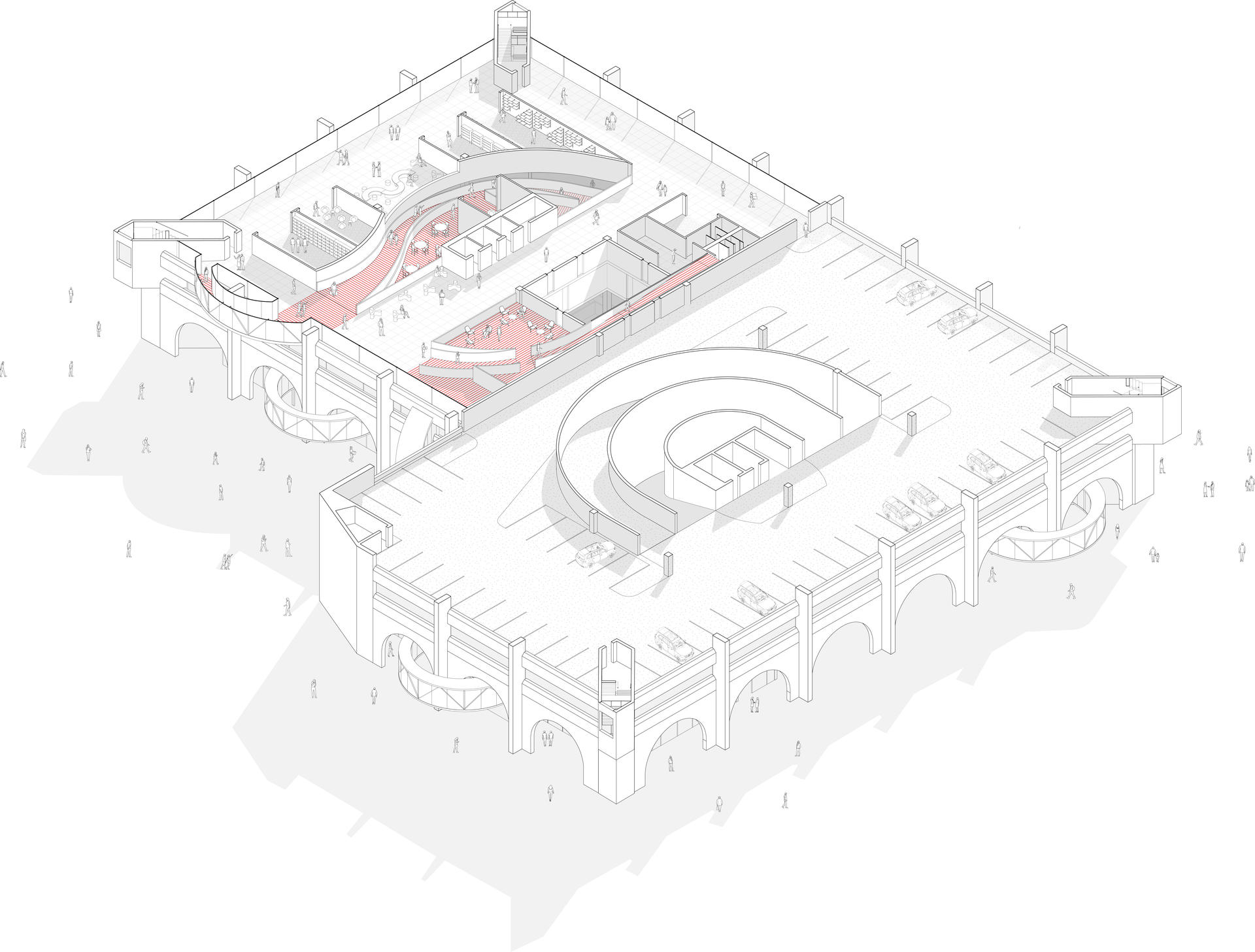
FIFTH FLOOR
Image
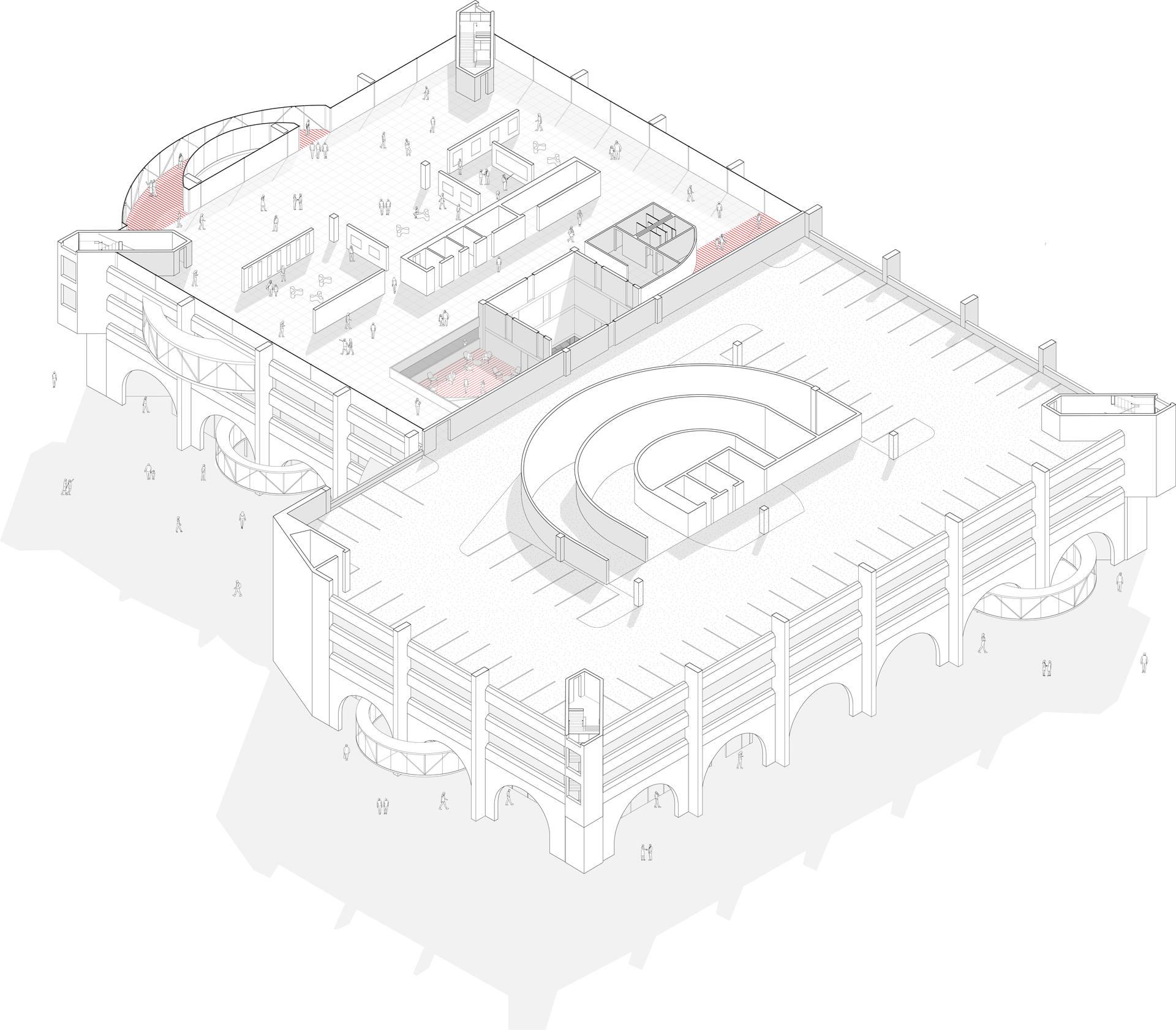
ROOF
Image
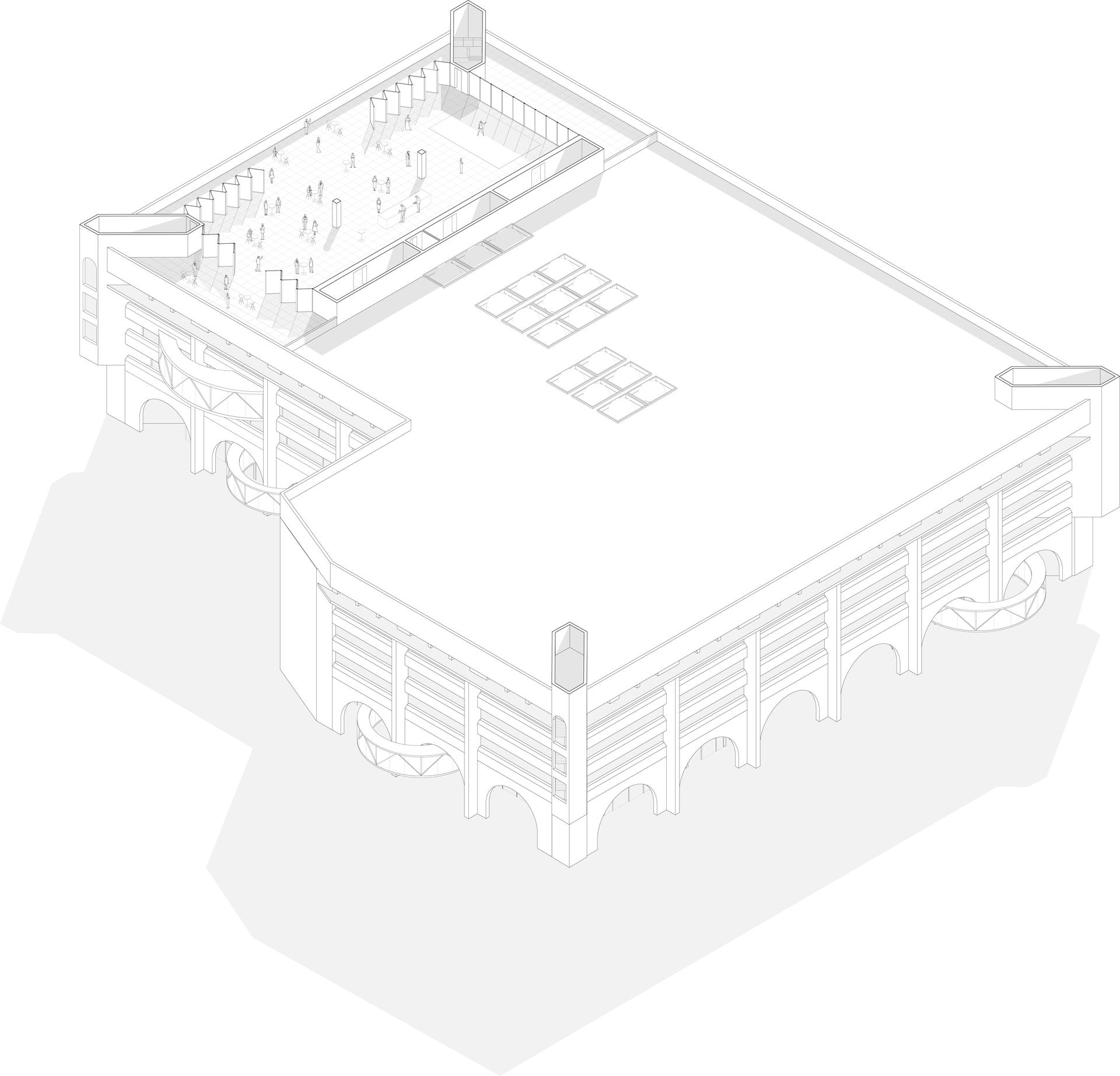
A CATALOG OF RAMPS
Image
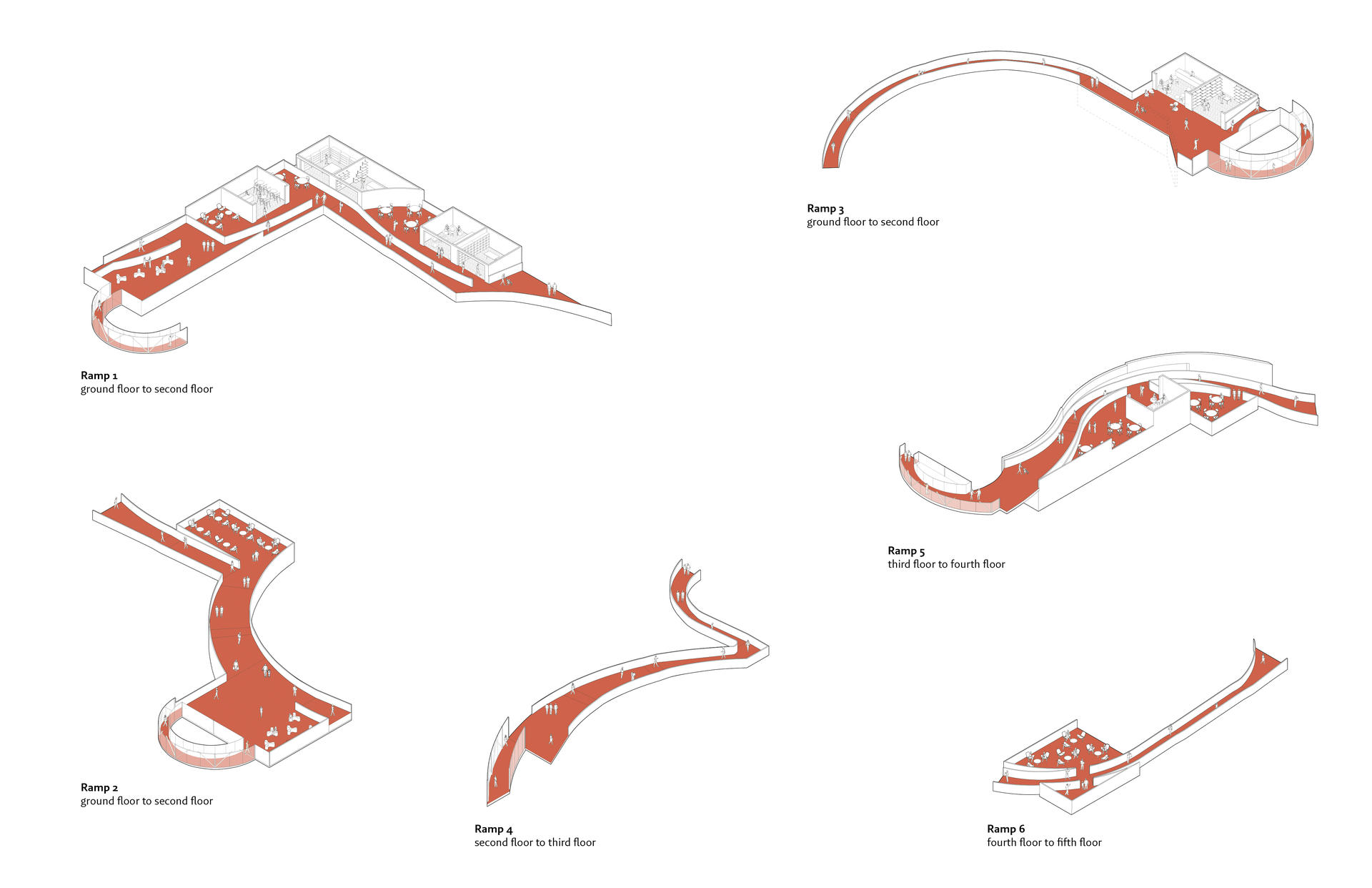
THE URBAN VISUAL NARRATIVE
Image
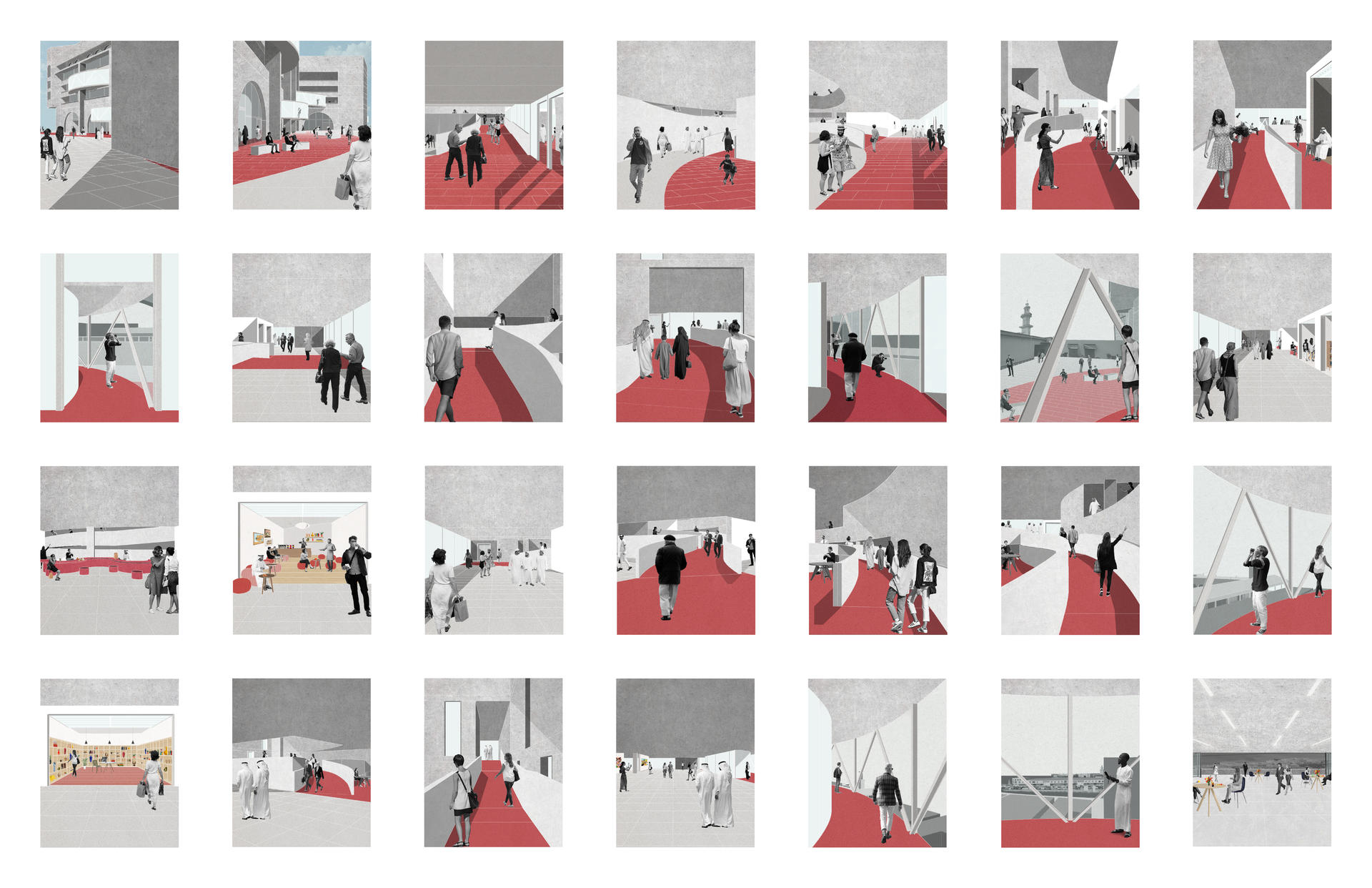
MODEL PHOTOGRAPH
Image
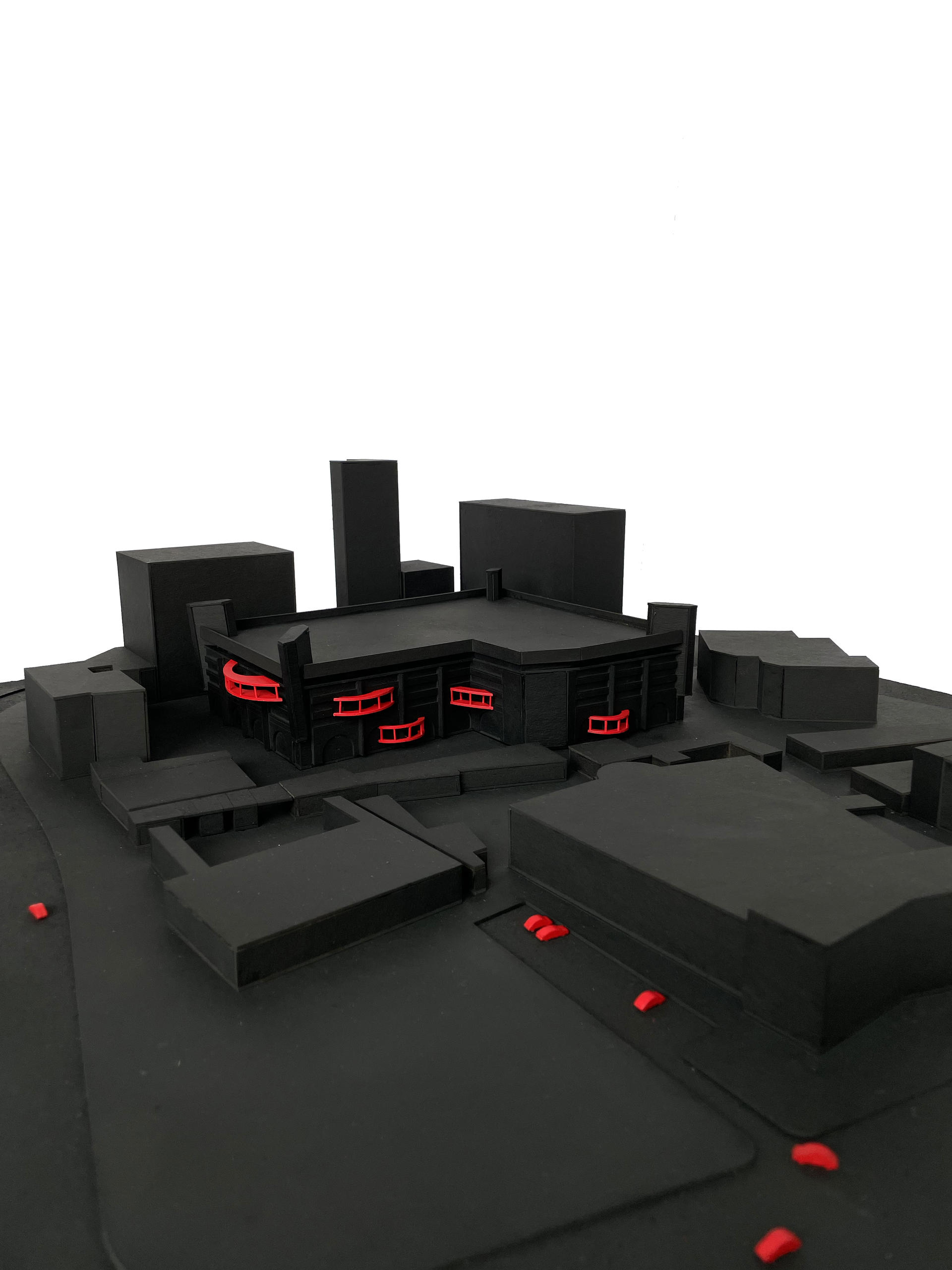
Image

BIBILOGRAPHY
- Al-Nakib, Farah. Kuwait Transformed : A History of Oil and Urban Life. Stanford, California: Stanford University Press, 2016.
- Smithson, Alison Margaret, and Peter Smithson. The Charged Void: Urbanism. New York: Monacelli Press, 2005.
